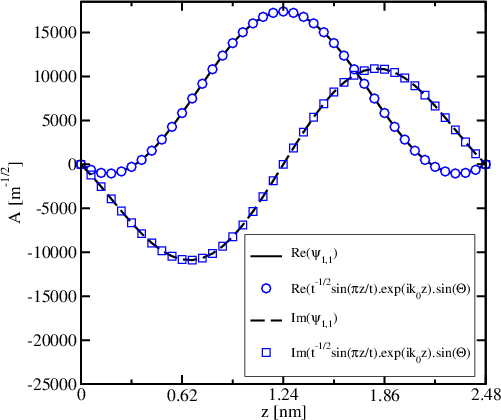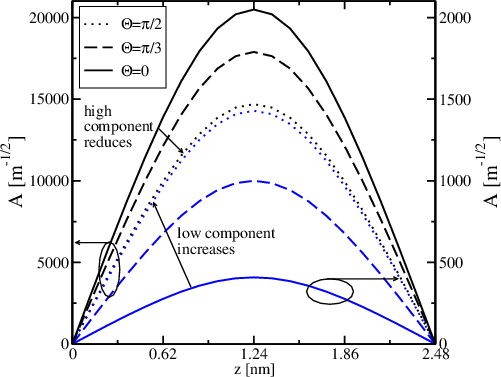
As
The four basis functions
 | (3.7) |
Here,
 | (3.10) |
Under these conditions, the new Hamiltonian can be written as
![[ ]
H = H1 H3 ,
H3 H2](diss_htm101x.png) | (3.11) |
with
![[ 2 2 2 2 2 ]
Hj=1,2 = ℏ-kz-+ ℏ-(kx +-k-y)+ (- 1)jδ + ˜U (z ) I,
2ml 2mt](diss_htm102x.png) | (3.12) |
 | (3.13) |
The wave functions corresponding to the Hamiltonian Equation 3.11 can be
expressed as Φ

 (c.f. Figure 3.5) is maintained.
(c.f. Figure 3.5) is maintained.

By considering
 | (3.14) |
 | (3.15) |
Here, tan  . Thus, when
. Thus, when  , the large components of the
four-components’ wave functions (Ψ
, the large components of the
four-components’ wave functions (Ψ
 | (3.16) |
where
The small component is considerably suppressed by the application of
the shear strain
The spin injection orientation also has a strong effect on the components of
the wave functions. For a fixed in-plane wave vector (